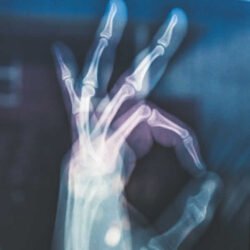Reversing Osteoporosis.
Over 10 million American’s aged 50 and over have osteoporosis.
Another 30 million American’s aged 50 and over have low bone density and are likely to develop osteoporosis.
Osteoporosis is an epidemic, and I can help you understand what it is, who it’s affecting, why, and what you can do about it.
What Is Osteoporosis?
Osteoporosis is a condition in which the bones become brittle and weakened. As a result, they are far more susceptible to fractures and breaks.
Many sufferers are unaware. The disease can lie undetected in numerous cases until it is brought to light by an injury.
Who’s At Risk?
Most frequently striking post-menopausal women, osteoporosis is often caused by decreased estrogen levels. However, the condition can occur in both women and men as a result of many complicating factors.
Why?
- Delayed puberty
- Excessive alcohol consumption
- Smoking
- The use of certain medications
- Poor diet and lifestyle choices
- Lack of exercise
- Incorrect use of supplementation
Although it accounts for 9 billion fractures per year in the US, Osteoporosis is entirely preventable!
To understand how you can prevent and reverse the effects of osteoporosis, it’s essential to understand how bones are built.
In simple terms, two types of cells relate to our bone health. One type of cell removes old, dead bone, and the other creates new bone.
Preventing and reversing osteoporosis is all about making sure these cells are balanced – this relies on a combination of hormones and nutrition!
What You Can Do
Whenever we think of healthy bones, we think of calcium. However, there are a few nutrients that are higher up the list.
Here are my top nutrients for reversing and preventing osteoporosis.
Protein
Bone is mostly made of protein, so ensuring you have enough in your diet is essential.
Avoid taking in large amounts of animal protein as the high levels of saturated fats increase calcium excretion and weaken bones as a result. I recommend plant protein sources – my go-to is soy.
Fatty Acids
Inflammation in the body naturally causes a significant increase in the cells that break down bone. This can often lead to bone loss.
Foods that are high in starch and sugar lead to inflammation. Foods like fish oils, seed oils, and nuts will be your best friend. Fatty Acids help sooth sites of inflammation and will help relieve pain.
Vitamin D
Vitamin D deficiency is unbelievably common and will exacerbate low bone density. Safely increasing your sun exposure or perhaps supplementation will be extremely beneficial to your bone health.
There are numerous conditions associated with Vitamin D deficiency, including autoimmune disease, rheumatoid arthritis, depression, and chronic pain. Supplementation is key, but I also recommend getting your Vitamin D levels tested regularly.
Vitamin A
Vitamin A is necessary if you decide to supplement with Vitamin D. Each protect against the toxic effects of the other – supplementing with Vitamin D will increase your need for Vitamin A to avoid issues such as kidney problems.
Vitamin K
Many proteins involved in bone production are dependant on Vitamin K as an anchor for calcium and other minerals.
You can find Vitamin K in dark leafy greens and dairy foods, but a well-balanced food supplement or multivitamin will contain sufficient amounts too.
Vitamin C
Vitamin C is essential for the functioning of the cells that produce new bone. Low Vitamin C levels will cause loose connective tissue, bleeding gums, easy bruising, and slow healing. And weak nails and teeth, as well as bones.
Calcium
Calcium is, of course, essential for bone health. However, calcium can become increasingly difficult to absorb, particularly for older people and post-menopausal women. This is due to a decrease in stomach acid.
As demographics more likely to be affected by osteoporosis, I do recommend getting your stomach acid levels tested and reaching for an easy-to-absorb calcium supplement.
Exercise!
Many studies have shown that weight-bearing exercise is very beneficial for maintaining good levels of bone density – bone remodeling happens as a result of even mild exercise.
Making movement a part of your day, even if only for fifteen minutes, will be extremely beneficial to the health of your bones.
A Final Word
Now you should have a clear understanding of what osteoporosis is, who it’s affecting, and why. You also have a list of the essential nutrients for reversing and preventing the condition.
But I want to say something about medication.
The medications typically prescribed for osteoporosis are known as Bisphosphonates, and have been associated with cases of osteonecrosis – infection and swelling in the lower jaw that can lead to loss of skin and teeth. There have also been associations with rare types of fractures that cause bones to shatter, esophageal cancer, and severe muscular and skeletal pain.
These are real risks, and with over 5000 cases have now gone to court, it is something you must be aware of.
For more information about the risks of medication and further discussion about natural solutions to osteoporosis, listen to my talk Reversing Osteoporosis Without Medication.
What next?
You need to be informed. Educate yourself. Keep up to date with the latest research.
- Book a free, fifteen-minute consultation to discuss your concerns and see how we might be able to help you achieve your health care goals.
- Check out the following Dr Sandy audio downloads:
-
 Natural Solutions to Osteoporosis & Osteopenia$14.99Add to WishlistAdd to Wishlist
Natural Solutions to Osteoporosis & Osteopenia$14.99Add to WishlistAdd to Wishlist -
 Natural Solutions for Bone Health$25.00Add to WishlistAdd to Wishlist
Natural Solutions for Bone Health$25.00Add to WishlistAdd to Wishlist




